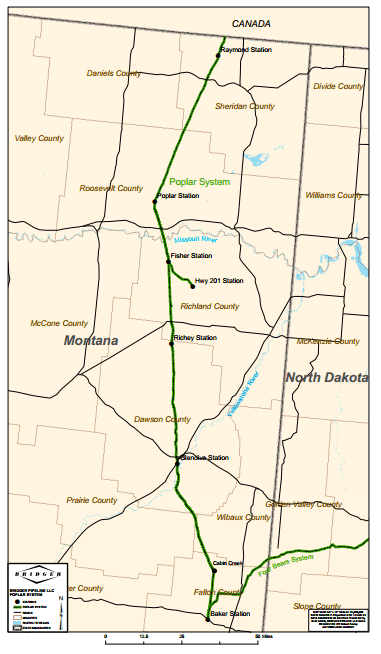A rhetorical war is being quietly waged over the remaining natural resources in the American West. We have recently seen the battles play out in Congress, as they pass funding to help transfer federal lands to states and, of course, we have seen it in the legislative bodies of several western states, including Montana, where proposed bills to transfer federal lands to state control have been met with anger and vitriol by citizens groups.
The weapon of choice for both sides in this conflict for our public resources is the 501(c) section of the United States Internal Revenue Code. As originally conceived, section 501(c) allowed for the formation of not-for-profit advocacy organizations. It reduced the tax burden on cash-strapped citizens groups and allowed for non-disclosure of the names of donors to shield community-minded contributors from constant pleas for money from similar organizations.
In 2010, everything changed due to the decision in the Citizens United v. FEC case in the U.S. Supreme Court. In its decision in the Citizens United case, the Court held that the First Amendment of the U.S. Constitution prohibited the government from restricting independent political expenditures by a nonprofit corporation. That decision released corporate America to enter the public discourse with a vengeance never seen before and to do so anonymously. They could now use the vast financial resources of their stockholders to influence and change public policy to protect and enhance corporate profits.
The number of nonprofit organizations soared, growing by more than 30% between 2003 and 2013 and further, spending by groups who no longer had to disclose their funding sources grew exponentially.

Center for Responsive Politics
Now, companies have been granted a way to pour unlimited money into causes that would disproportionately benefit their bottom line and they could do so using so called, “Dark Money” because they no longer have to reveal that funding for their positions came from the various business interests who would most benefit from changes in state and national policy.
501(c) groups funded by corporate profits make anonymous accusations against 501(c) environmental and groups who, likewise, don’t release their funding sources. In one of the more recent examples we see letters in local newspapers from someone named “Will Coggin”, reputed to be “director of research for the Environmental Policy Alliance.” In a letter published April 2 in the Helena Independent Record, and in other Montana papers, Mr. Coggins makes outrageous claims against some of the most popular environmental groups in Montana, accusing groups like Trout Unlimited, Backcountry Hunters and Anglers, and The Theodore Roosevelt Conservation Partnership of “camouflaging their [anti-gun, anti-energy] efforts by manipulating the more politically conservative sportsmen community” and of being “Out-of-state radical environmentalists”.
One of the main attacks advocating for land transfer has been that states are more efficient in managing public lands because they make more money on their holdings. I guess I would agree that states charge more for use of public resources, but I would argue that there are many good reasons and advantages for the disparity. In the case of Montana, state law requires that state trust lands provide the maximum revenue possible. That is not true of federal holdings. In fact, in many cases federal agencies have kept lease and sale costs on their resources below market value for good reason. Federal timber has been sold below cost to keep lumber prices down during hard times. Lower prices are also used to subsidize local timber and mining companies to retain local jobs. When ranchers graze cattle on federal lands at lower prices, the cost for your hamburger remains affordable. Yes, we could charge more for the use of our resources, and in some cases we should, but in keeping prices affordable for rural folks, we keep our rural economies viable. So yes, the Feds could charge more as do most state agencies, but that means only an increase in commodity prices for us all and higher profits for producers.
Will Coggin is informed on these issues, but he has a corporate-driven agenda to promote. Camouflage would be something with which Mr. Coggin is intimately familiar. He, of course, doesn’t reveal that he is an employee of one of Washington D.C.s largest corporate lobbying firms headed by Richard Berman (dubbed “Dr. Evil” by CBS 60 Minutes). Berman has become a favorite hit man hired by corporations wanting to influence public policy without seeming to be connected to the effort. Berman has established hundreds of web sites and foundations, usually using 501(c)(3) organizational ambiguity, to anonymously flog corporate ambitions. In fact, the Environmental Policy Alliance, by which Mr. Coggin claims to be employed, is in fact a PR front group established by Berman & Co. Berman’s groups are funded by foundations created by business interests. The purposely named EPA claims to be a project of the “Center for Organizational Research & Education”, which itself morphed last year from the Berman-created “Center for Consumer Freedom” which was set up by Rick Berman to attack PETA and food safety advocates on behalf of restaurant interests.
It’s extremely easy to get lost trying to follow this bewildering web of fake advocacy groups and nonprofit foundations, but of course, that’s really the point. Let’s go just a bit further. The transfer of federal lands into state hands is being advocated primarily by oil, gas, timber and mining interests to make it easier for them to get their hands on our natural resources. And, of course, these same interests are large contributors to nonprofit “foundations” set up by Mr. Berman. In attacking environmental groups for attempting to block the transfer, Mr. Coggin cites “research” done by the Property and Environment Research Center in Bozeman, MT, a 501(c)(3) center funded primarily by Koch Industries and ExxonMobil and advocating “free-market environmentalism”. PERC has ties to the American Lands Council (501(c)), which is one of the primary movers behind the push to transfer federal lands to the states as well as the Koch/Exxon/BP-funded American Legislative Exchange Council (ALEC) (501(c)) which writes model laws, including land transfer bills, and “trains” state legislators in corporate objectives. The Coggin/PERC/Berman/Koch/ conglomerate has spent billions of your tax, investment and pension funds to promote an idea that has no chance of moving forward.
This is not about control by the state, it is about control of the state and easier access by corporations. It’s not about your property rights, but the rights of TransCanada to take your land for their profit, the rights of ExxonMobil to drill on your land, or the right of mining companies to pollute your streams.
In Montana, we have a hard-learned history with corporate control of our state. At the turn of the 20th century the Anaconda Copper Company controlled ¾ of the jobs in our state and most of our natural resources. Anaconda regularly bought and sold state legislators and pillaged our communal resources at will. The people of Montana learned that lesson once and we won’t go back.
Filed under: Button Valley News, Crazy, Energy Industry, Montana Environment, Montana News, Montana People, Montana Politics, Water, Wildlife and Environment | 1 Comment »
 It wasn’t the Russians. It wasn’t racism. It wasn’t Wikileaks, Fox News, Corporate Media or the FBI. We did it to ourselves.
It wasn’t the Russians. It wasn’t racism. It wasn’t Wikileaks, Fox News, Corporate Media or the FBI. We did it to ourselves.














